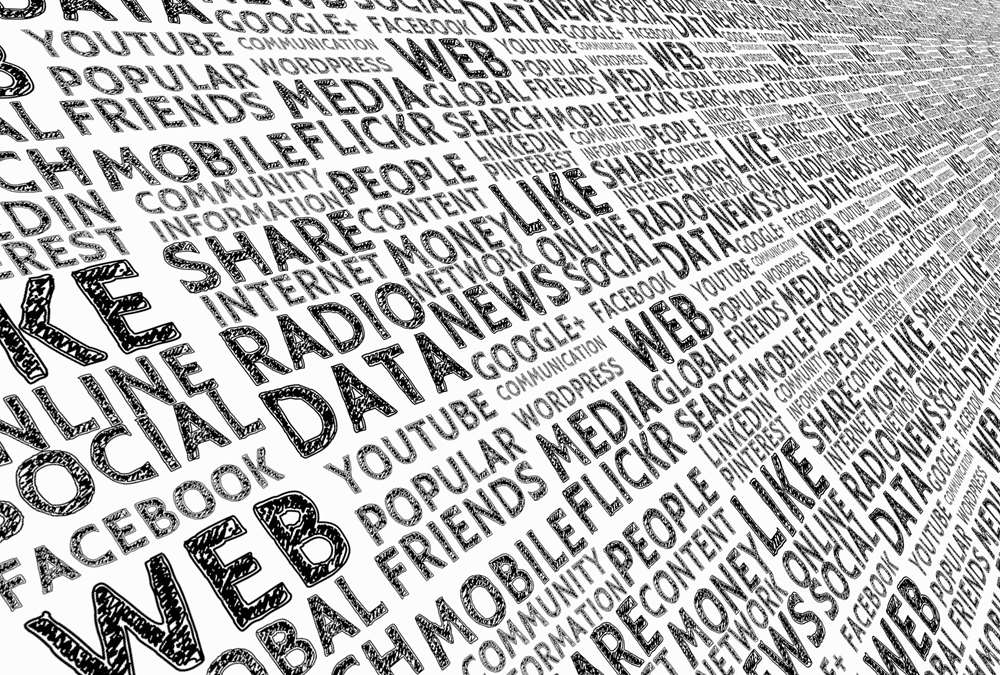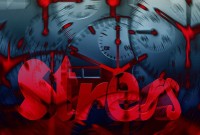- Home
- Business Processes
- Industry Knowledge
- Aerospace Industry
- Automotive Industry
- Banking Domain
- BFSI Industry
- Consumer/ FMCG Industry
- Chemicals Industry
- Engineering & Construction
- Energy Industry
- Education Domain
- Finance Domain
- Hospitality Domain
- Healthcare Industry
- Insurance Domain
- Retail Industry
- Travel and Tourism Domain
- Telecom Industry
- Leadership Skills
- eLearning
- Home
- Leadership
- Change Management
- Digital World of Work
Digital World of Work
Technological advancement has brought about radical changes in the methods of work and also in the organizational structure and talent strategies. The future of work is transforming our work, workforce, and workplace. Some important trends observed during recent times are discussed below.
Technological advancement has brought about radical changes in the methods of work and also in the organizational structure and talent strategies. The future of work is transforming our work, workforce, and workplace. Some important trends observed during recent times are discussed below.
- Globalization of market
- Changing methods of production
- Economic instability
- Global Pandemic like COVID-19
- Blending of the physical and virtual work environments
- Upskilling and continuous learning of the workforce
- Advances in technology such as robotics and the cloud
- Digital world of work
Globalization of market
"Globalization” is the process by which businesses or other organizations develop international influence or start operating on an international scale. Globalization impacts almost every aspect of business today. Companies are expanding to international markets and establishing marketing, manufacturing, or research and development facilities in several foreign countries. Companies need to focus on expanding their geographic diversification and investment in secondary markets to mitigate and manage risk in times of disruption.
With globalization, they need to create business units scattered around the world along with suppliers, manufacturers and distributors. As they mature, they become stateless corporations who have market in the whole world. They create multiple subsidiaries which are interlinked to each other and competitive position in one country significantly influences other countries in whole world. To meet the need of globalization, the top managers must redesign the organization's structure to one that is adaptive with the changing environment. This rise in complexity of size and organizational management will create challenges for leaders as operating models evolve.
Changing methods of production
Job production involves the production of single, individual items. Batch production means the production of batches of similar products. Flow production involves passing sub-assemblies/parts from one stage of production to another in a regular flow. Mass production involves the production of products on a large scale. Most companies plan a strategy to go to market with their products. In customer-orientation, the organization is aligned towards the production of a single product according to the customer's demand. The process-oriented strategy has the goal of optimizing processes along the order flow. Task-oriented structuring strategy aims at repartitioning similar tasks. Product-oriented structuring aligns according to the requirements of products or product groups. Different goods may require different production processes influencing the organizational design.
Economic instability
Economic instability involves a shock to the usual workings of the economy. In a serious crisis, uncertainty can reach extreme levels, and the normal way of working becomes overstrained. At such times traditional management operating models rarely prove adequate, and organizations with inadequate processes can quickly find themselves facing existential threats. In the financial crisis of 2008–09, many organizations were simultaneously affected. After the global financial crisis, global mergers and acquisitions activity accelerated, and many companies were consolidated to avoid failure. Organizational structure redesign may be unavoidable to improve the efficiency of the organization activity under conditions of instable external environment. During severe global crisis, managers need new operating models to respond quickly to the rapidly shifting environment and sustain their organizations through the change.
Advances in emerging technology (robotics, cloud etc.)
Technology empowers companies to grow faster, produce better products and serve customers more effectively. It connects a workforce, analyzes data and allows products to be manufactured precisely. Companies wishing to harness technological advances as a competitive advantage must constantly seek newer, faster and better technologies to improve their business. Emerging technologies include a variety of technologies such as educational technology, information technology, nanotechnology, biotechnology, cognitive science, robotics, and artificial intelligence. Robotics deal with automated machines that can take the place of humans in dangerous environments or manufacturing processes. Robotic process automation (RPA) is a software technology that makes it easy to build, deploy, and manage software robots that emulate humans actions interacting with digital systems and software. Recognizing the possibilities or threats of new technologies introduced in the market allows the company to react by realigning its products or services, processes, skills, logical forms of profit and value network relationships. Changes are made to business models and these are reorganized to deliver value to customers
Global Pandemic like COVID-19
Uncertainty levels from recent global shocks do not approach those of the present COVID-19-triggered crisis.
The overnight rush into remote working sent organizations into a spin, one that caused tremendous anxiety and accelerated the adoption of technology to minimize damage to operations and business. Global institutions, both public and private temporarily moved to remote working. How post pandemic world will operate with most likelihood of safety restrictions remaining a priority and how to approach work, working environment, expectations and employee relations need to be seen. While organization design in the post-pandemic era will be guided by individual organizational priorities, and culture, it will also be affected by the flexibility in mindset, agility to transform and adapt and risk appetite of leaders. It is clear that the future of the workplace is indeed hybrid. How soon organizations accept, respond and execute their action plan for redesigning their organization for the now and future of work, will determine their ability to come out successful, sustainable and resilient on the other side of the pandemic.
Blending of the physical and virtual work environments
A recurring theme across organizations is that of a hybrid workplace, one that allows employees the flexibility to choose between working from home or office, or even co-working spaces and satellite offices, whatever works best for employees, ensuring no compromise on productivity and well-being. Recent pandemic has proved beyond doubt that while connected on digital platforms, members of the modern workforce can work anywhere, at any time. These changes are impacting all industries as advances in technology fundamentally change the work itself, who does the work, and where it needs to be done. In a digital world, machines and humans will be enabled to do what they do best independently and in concert with each other. Companies will challenge the idea that work should be performed in a specific physical location by exploring ways to digitize some or all work through advances in technologies. An organization will be made up of many types of workers and will engage partners and other key stakeholders anywhere in the world. The future workplace will blend the physical and virtual environments and will deliver a consistent employer identity to all types of employees, contractors, and other stakeholders. Personalized experiences will empower people to be their best, balanced selves. Collaboration tools and platforms will support dynamic work locations and asynchronous collaboration.
Upskilling and continuous learning of the workforce
With almost all meetings now happening remotely, prospective employees need to have the ability to drive a project and collaborate with the team by communicating effectively. Employees who demonstrate the ability to work productively without direct supervision or who are capable of being independent contributors will also be sought after by companies. Some of the other key skills to be in demand are extensive technical knowledge and flexibility to take up a task or work from the office when necessary. At the supervisory level, companies will look for candidates who can bring in new skills that fit new ways of working, specifically those who can effectively manage, supervise and engage their teams working from remote locations. Most importantly the candidates should possess the strength, confidence and empathy to handle dynamic, evolving scenarios and situations. Future organizations will identify, attract and engage people with the right skills and experience to achieve its mission and purpose.
As organizational complexity complicates career pathing, companies will need to provide reskilling and career development support — for example, by developing resources and building out platforms to provide visibility into internal positions. Industry leaders echo the need to reskill not just for new technologies, but also for the new workplace. There will also be a need to customize performance management and extend career development support. Continuous learning will support the upskilling needed across the workforce to address looming talent shortages.
Digital world of work
Modern employees will not be geographically bound, so organizations that embrace the remote/hybrid workplace model, evolve internal structures to facilitate dispersed teams and successfully reskill employees are more likely to be successful in the future. The organizations must focus on transcending the organization’s culture beyond the physical office space backed by advanced IT infrastructure. Future employees will be multi-faceted and will more readily adopt newer technologies like Cloud Computing; Artificial Intelligence & Big Data Analytics. Cybersecurity; Mobile & Web Development and Internet of Things, along with soft skills will certainly thrive in a virtual/hybrid work environment.”
Summary
The trends that define the future of work are leading to an “unleashed” organization. Many organizations have begun to explore the Future of Work, quickly build on these practices, and scale their business models as an initial response. An organization with a Future of Work mindset will be more resilient at coping with uncertain times and will be able to adapt and thrive.
Related Links
You May Also Like
-
Facilitative Leadership is all about involving the employees in the decision-making process at all levels enhancing their sense of ownership, responsibility, and motivation. Facilitative leadership style uses a number of indirect communication patterns to help the group reach consensus and build commitment for the decision taken. To be effective in modern organizations, managers need to become facilitative leaders, learn what it means to be a one.
-
Recognizing Stress & its Sources
As an individual, you almost certainly know what stress feels like. Stressors are events or situations to which people must adjust. Stressors may be physical or psychological in nature. The level of severity of stress is determined not merely by exposure but the intensity, duration, and frequency of stressors. The sources of stress are many. They arise from multiple areas both with the individual and from the environment.
-
Many different types of teams have been identified by social scientists. Managers may encounter the diverse types of challenges while managing different kinds of teams. Challenges associated with Cross-Functional Teams might be different from that of a Geographically Dispersed Team or a Virtual Team. This article explores some common categories and subtypes of teams.
-
Time management is the process of planning and exercising conscious control of time spent on specific activities, especially to increase effectiveness, efficiency, and productivity. The best time management techniques improve the ways you work. Time management refers to managing time effectively so that the right time is allocated to the right activity. Learn more about the five steps for effective time management viz. study, identify, analyze, decide, and implement.
-
As we know change is inevitable as market expectations are not static, new technology is constantly being developed, and organizational responses are inevitable to these sequences. It is a simple matter of business evolution. If every manager and every employee could have some understanding of the triggers of change and their relationships with each other, then the acceptance to change would be easier.
-
At different points in your professional career, it is helpful to identify your core values. Values are the qualities considered to be the most important guiding principles that determine the priorities in your life and greatly influence your career choices. Your career brings happiness when it is in agreement with the beliefs you have about what is important and meaningful to you. Awareness of your values will help you develop a clearer sense of what's most important to you in life.
-
Stress is an essential part of our life. No one can live without stress. Stress can be beneficial as well as harmful. Stress as a positive influence adds excitement and hope while as a negative influence it can result in destructive feelings, anger, and depression. Although the general orientation to stress is to consider unfavorable outcomes, yet one must have observed that stress experiences may also facilitate the development of effective and varied coping behavior, increased personal resources, and lead to a sense of competence in development. Stress at a moderate level is not only inevitable but may be useful for physical and mental well-being.
-
We define Lean as the systematic elimination of waste through a continual effort to decrease inefficiency; the lean leader strives to create a more efficient organization. Lean leadership is a philosophy. It is a consistent way of thinking and being in your role as a leader. The focus of this approach is on raising new leaders and help their team embrace a culture of continuous improvement. Learn what we mean by lean leadership style and its principles.
-
Change is a complex phenomenon. There are different types of changes that are going on around us. Listed in this article are twelve areas in which change arises and bring some classification to it. However one may classify the change, the various heading is always interrelated. The change could be triggered by market changes, technological changes, or organizational changes.
-
Crisis leadership is a very important part of leading in today's world. The skills a leader needs in order to guide people during a crisis are different from the skills needed to help a group grow. Are you a good crisis leader? What is your leadership style in case of a business crisis situation? A business crisis can test the strongest of leaders, read this article to explore how to ensure you’re ready to take action and weather the storm when one strikes you.
Explore Our Free Training Articles or
Sign Up to Start With Our eLearning Courses

About Us
Learning
© 2023 TechnoFunc, All Rights Reserved










